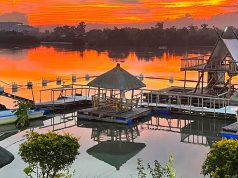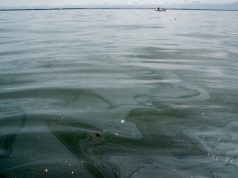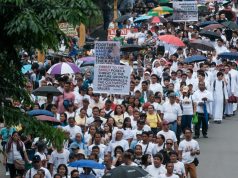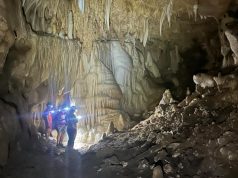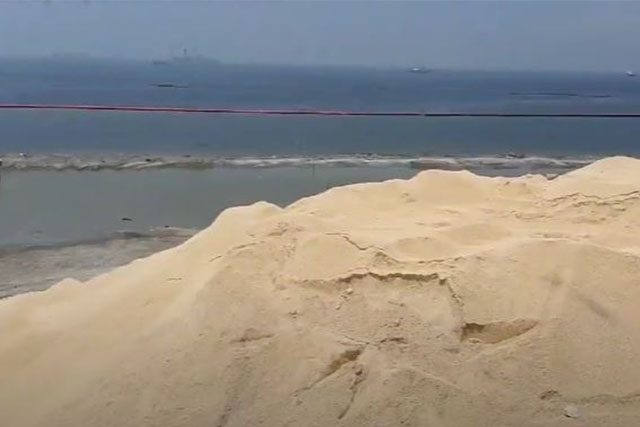
Filipinos are asking the Department of Environment and Natural Resources to focus on alleviating water pollution in Manila Bay after it started dumping pulverized dolomite rocks on the bay walk as part of the harbor’s rehabilitation program.
The government agency caught the public’s attention when pictures and videos of what looked liked “white sands” and “sand dunes” within the bay’s vicinity surfaced online.
Reports said that the department sought to fill 500 meters of the bay walk on Roxas Boulevard with pulverized dolomite rocks from Cebu as part of the Manila Bay Rehabilitation Program that started in January 2017.
“Gagawin white sand itong, dito sa may bay walk area, para makita ng tao na kapag puti ang kulay ng isang bagay, kailangan pangalagaan mo ito at ‘wag mo dumihan,” DENR Undersecretary Benny Antiporda was quoted as saying on a Wednesday report.
He later on clarified that pulverized dolomite rocks were dumped on the bay walk, contrary to reports that white sands were brought in.
A dolomite is a sedimentary rock that has color ranges of white-to-gray and white-to-light brown. It is used for construction materials and has the ability to neutralize acids.
Antiporda said that the initiative is for people who cannot go to Boracay or other tourist destinations amid the coronavirus pandemic.
Boracay, the country’s top tourist destination, is internationally recognized for its pristine beaches with fine white sands.
LOOK:Nagsimula nang magtambak ng puting buhangin ang bahagi na ito ng Manila Bay. Target kasi ng DENR gawing white sand beach ang lugar para sa mga kababayang hindi makapupunta sa Boracay at iba pang tourist destinations pic.twitter.com/7OMjvDwX61
— Shyla Francisco (@ShylaFrancisco) September 3, 2020
Workers on Thursday prepare the white sand at the Manila Bay, which has been under rehabilitation since January 27, 2019 after the DENR recorded extremely high fecal coliform levels from major Manila Bay outfalls. pic.twitter.com/6SzqOBJDkn
— The Philippine Star (@PhilippineStar) September 3, 2020
Authorities are reportedly expecting “white sands” to be seen in the area as the International Coastal Clean Up Day approaches on September 18.
The event encourages the public to rid beaches of garbage and make them aware of preserving oceans and waterways.
Several members of the Cabinet will oversee the program once it pushes through.
Antiporda admitted that while part of the bay walk would be filled with pulverized dolomite rocks, the bay’s water quality is still unswimmable.
“Pero ‘yung water quality natin, of course, hinahabol pa natin. Ayaw natin palusungin ang mga tao dito na merong health risk,” he said.
The problem is ‘pollution’
Some Filipinos, including environmental group Youth Strike for Climate Philippines, were not impressed by the move.
The group urged DENR to focus on ridding the bay of water pollution instead of artificially beautifying the area.
“The problem is not the high fecal coliform but the pollution that Manila Bay is currently facing. STOP HARVESTING SAND FROM OTHER PLACES JUST TO BEAUTIFY THIS DIRTY BAY. There are so many issues we need to FOCUS ON like the pandemic response and yet here is our government, doing this stuff,” the group said on its page.
GMA broadcast journalist Atom Araullo wondered if the project is “sustainable” and shared his concerns about its potential environmental impacts.
“Since white sand is not a natural feature of Manila Bay, one wonders if this project is sustainable. Besides, where is the white sand getting extracted? The environment impact of that kind of operation is worrying,” he tweeted.
Another Twitter user accused the initiative of being “short term” and urged officials to address the problem with Manila Bay’s waters.
“Address how to minimize the pollution first. This looks like a short term plan? ‘San galing ang buhangin para tambakan ang Manila Bay? This looks destructive and unsustainable,” the online user said.
“It’s not that we lack sand in Manila, we lack the responsibility and accountability to fix the waste that goes out to the bay,” commented another online user with an emoji of a man doing a facepalm.
Last January, Environment Secretary Roy Cimatu said that DENR’s top priority until 2022 or until President Rodrigo Duterte steps down is the full-on rehabilitation of Manila Bay.
He admitted that while it is challenging to clean its heavily-polluted waters, they would make it swimmable to people and be a go-to place for recreation.
“Our effort to restore Manila Bay is now in full swing and we hope to sustain the momentum of restoring it to its former glory in the coming years,” Cimatu said before.
That month, fecal coliform levels in the Manila bay walk, the Baseco beach and the Estero Antonio de Abad have dropped due to the department’s rehabilitation efforts but it was still not enough.
Last March, the harbor’s waters turned turquoise blue which initially impressed Filipinos but it turned out to be an effect of harmful pollutants.




